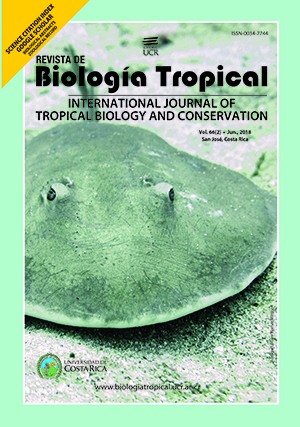Abstract
Mangroves represent an environment of great heterogeneity and low diversity of plant species that have structural and physiological adaptations linked to a high salinity environment. Laguncularia racemosa is a typical tree species in mangroves and transitional zones. This study aimed to compare the wood anatomy of L. racemosa (Combretaceae) in two different forests (mangroves and transitional forests), which have different soil conditions. For this, we obtained wood and soil samples in March 2016. We analyzed soil nutritional contents in one 15 cm deep soil sample per forest type. In addition, we selected five mangrove trees in each formation for wood anatomy analysis and took one wood sample per individual, per area. We prepared histological slides and separated materials following standard methods for wood anatomy studies. Soil analysis showed that mangrove soils had higher phosphorus, potassium and calcium contents. The transitional soil had lower pore water salinity and soil pH, probably due to high aluminum levels. Anatomical attributes differed between different forest populations. In the different wood aspects evaluated, we obtained higher values in mangrove individuals when compared to the transitional forest population: vessel elements length (375.79 mm), tangential vessels diameter (75.85 mm), frequency of vessels (11.90 mm) and fiber length (889.89 mm). Moreover, parenchyma rays height was larger in the samples of the transitional forest (392.80 mm), while the mangrove population presented wider rays (29.38 mm). The structure of the secondary xylem in the studied species apparently responds to edaphic parameters and shows variations that allow it to adjust to the environmental conditions. The population of the transitional forest showed a secondary xylem that invests more in protection than the mangrove population. Rev. Biol. Trop. 66(2): 647-657. Epub 2018 June 01.
##plugins.facebook.comentarios##

This work is licensed under a Creative Commons Attribution 4.0 International License.
Copyright (c) 2018 Revista de Biología Tropical


